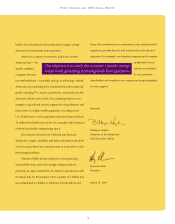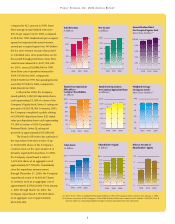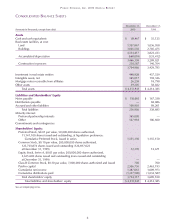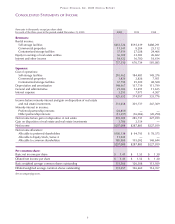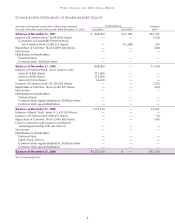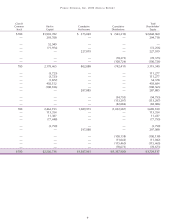Public Storage 2000 Annual Report Download - page 14
Download and view the complete annual report
Please find page 14 of the 2000 Public Storage annual report below. You can navigate through the pages in the report by either clicking on the pages listed below, or by using the keyword search tool below to find specific information within the annual report.
N
OTES TO
C
ONSOLIDATED
F
INANCIAL
S
TATEMENTS
December 31, 2000
P
UBLIC
S
TORAGE
, I
NC
. 2000 A
NNUAL
R
EPORT
12
Note 1 —
Description of the Business
Public Storage, Inc. (the “Company”) is a California corporation, which was organized in 1980. We are a fully integrated, self-administered
and self-managed real estate investment trust (“REIT”) whose principal business activities include the acquisition, development, ownership
and operation of storage facilities which offer storage spaces and containers for lease, usually on a month-to-month basis, for personal and
business use. In addition, to a much lesser extent, we have interests in commercial properties.
In 1996 and 1997, we organized Public Storage Pickup and Delivery, Inc., as a separate corporation and partnership (the corporation
and partnership are collectively referred to as “PSPUD”) to operate storage facilities that rent portable storage containers to customers
for storage in central warehouses. At December 31, 2000, PSPUD had 41 facilities in operation in 13 states.
We invest in real estate facilities by acquiring wholly owned facilities or by acquiring interests in real estate entities which also own
real estate facilities. At December 31, 2000, we had direct and indirect equity interests in 1,507 properties located in 38 states,
including 1,361 self-storage facilities and 146 commercial properties. The Company under the “Public Storage” name operates all
of the self-storage facilities.
Note 2 —
Summary of Significant Accounting Policies
Basis of presentation
The consolidated financial statements include the accounts of the Company and 35 controlled entities (the “Consolidated Entities”).
Collectively, the Company and these entities own a total of 1,253 real estate facilities, consisting of 1,247 storage facilities and six
commercial properties.
At December 31, 2000, we had equity investments in 11 limited partnerships in which we do not have a controlling interest. These
limited partnerships collectively own 114 self-storage facilities, which are managed by the Company. In addition, we own approximately
42% of the common interest in PS Business Parks, Inc. (“PSB”), which owns and operates 140 commercial properties. We do not
control these entities, accordingly, our investments in these limited partnerships and PSB are accounted for using the equity method.
From the time of PSB’s formation through March 31, 1998, we consolidated the accounts of PSB in our financial statements. During
the second quarter of 1998, our ownership interest in PSB was reduced below 50% and, accordingly, we ceased to have a controlling
interest in PSB. Accordingly, effective April 1, 1998, we no longer included the accounts of PSB in our consolidated financial
statements and have accounted for our investment using the equity method. For all periods after March 31, 1998, the income
statement includes the Company’s equity in income of PSB. Further, commercial property operations for the periods after March 31,
1998 reflect only the commercial property operations of facilities owned by the Company.
Use of estimates
The preparation of the consolidated financial statements in conformity with accounting principles generally accepted in the United
States requires management to make estimates and assumptions that affect the amounts reported in the consolidated financial
statements and accompanying notes. Actual results could differ from those estimates.
Income taxes
For all taxable years subsequent to 1980, the Company qualified and intends to continue to qualify as a REIT, as defined in Section
856 of the Internal Revenue Code. As a REIT, we are not taxed on that portion of our taxable income which is distributed to our
shareholders provided that we meet certain tests. We believe we have met these tests during 2000, 1999 and 1998; accordingly,
no provision for income taxes has been made in the accompanying financial statements.
Financial instruments
The methods and assumptions used to estimate the fair value of financial instruments is described below. We have estimated the fair
value of our financial instruments using available market information and appropriate valuation methodologies. Considerable judgment
is required in interpreting market data to develop estimates of market value. Accordingly, estimated fair values are not necessarily
indicative of the amounts that could be realized in current market exchanges.



